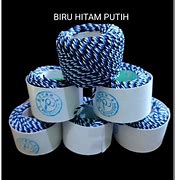
M200 Motor Blue Robotics
Aktuator adalah peralatan mekanis untuk menggerakan atau mengontrol sebuah mekanisme atau sistem. Pada sistem robot, aktuator ini sebagai elemen yang mengjonversi besaran listrik analog menjadi besaran lainnya sehingga dapat menghasilkan gerakan pada robot. Terdapat beberapa jenis aktuator yang bisa digunakan dalam robot salah satunya adalah motor listrik
Motor listrik adalah alat untuk mengubah energi listrik menjadi energi mekanik. Terdapat 2 jenis motor listrik yaitu :
Motor AC (Alternating Current), Motor AC adalah motor listrik yang menggunakan arus bolak balik (Alternating Current). Motor ini sering digunakan di skala industri yang besar. Motor ini juga disebut juga motor Induksi
Prinsip kerja motor listrik indusksi sedikit berbeda dengan prinsip kerja motor DC. Dalam motor induksi single phasa atau biasa kta sebut dalam bahasa indonesia adalah motor satu phase, ketika supply satu phase diberikan ke belitan stator, berdenyut menghasilkan medan magnet dan dalam motor induksi tiga phase, ketika supply tiga phase diberikan ke belitan stator tiga phase, berputar dan menghasilkan medan magnet. Rotor dari motor induksi adalah tipe either wound atau tipe squirrel cadge. Apa pun jenis rotornya, konduktor di atasnya disingkat pada akhirnya untuk membentuk loop tertutup. Karena medan magnet yang berputar, fluks melewati celah udara antara rotor dan stator, menyapu melewati permukaan rotor dan memotong konduktor rotor.
Oleh karena itu menurut hukum Faraday tentang induksi elektromagnetik, akan ada arus induksi yang mengalir dalam konduktor rotor tertutup. Jumlah arus yang diinduksikan sebanding dengan tingkat perubahan hubungan fluks sehubungan dengan waktu. Sekali lagi laju perubahan hubungan fluks ini sebanding dengan kecepatan relatif antara rotor dan medan magnet yang berputar. Sesuai hukum Lenz rotor akan mencoba untuk mengurangi setiap penyebab menghasilkan arus di dalamnya. Karenanya rotor berputar dan mencoba mencapai kecepatan medan magnet yang berputar untuk mengurangi kecepatan relatif antara rotor dan medan magnet yang berputar.
Video Prinsip Kerja Motor Induksi
Motor DC adalah motor listrik yang menggunakan arus searah (Direct Current). Motor ini sering digunakan untuk robot skala kecil.
Prinsip kerja Motor DC terutama tergantung pada aturan Tangan Kiri Fleming. Pada motor DC dasar, armature atau rotor ditempatkan di antara kutub magnet. Jika lilitan pada rotor dipasok sumber daya DC eksternal, arus mulai mengalir melalui konduktor rotor. Ketika konduktor membawa arus di dalam medan magnet, mereka akan mengalami gaya yang cenderung memutar dinamo. Misalkan konduktor rotor di bawah kutub N magnet medan, membawa arus ke bawah (persilangan) dan yang di bawah kutub S membawa arus ke atas (titik). Dengan menerapkan Aturan Tangan Kiri Fleming, arah gaya F, yang dialami oleh konduktor di bawah kutub N dan gaya yang dialami oleh konduktor di bawah kutub S dapat ditentukan. Ditemukan bahwa setiap saat kekuatan yang dialami oleh konduktor berada sedemikian rupa sehingga mereka cenderung memutar dinamo.
Sekali lagi, karena rotasi konduktor di bawah kutub N berada di bawah kutub S dan konduktor di bawah kutub S berada di bawah kutub N. Sementara konduktor beralih dari kutub N ke kutub S dan kutub S ke kutub N, arah arus yang melalui mereka, dibalikkan dengan menggunakan commutator. Karena pembalikan arus, semua konduktor berada di bawah kutub N membawa arus ke arah bawah dan semua konduktor berada di bawah kutub S membawa arus dalam arah ke atas seperti yang ditunjukkan pada video animasi di bawah. Oleh karena itu, setiap konduktor datang di bawah N-pole mengalami kekuatan dalam arah yang sama dan sama juga berlaku untuk konduktor berada di bawah S-kutub. Fenomena ini membantu mengembangkan torsi terus menerus dan searah.
Video Prinsip Kerja Motor DC
Beberapa hal yang harus diperhatikan ketika memilih motor listrik untuk robot adalah tegangan kerja motor, arus motor serta torsi yang dihasilkan dari motor.
Berikut ini adalah contoh penggunaan motor listrik di robot :
Video Contoh Penggunaan Motor DC di Robot
Anda dapat membayar sebagian dari jumlah total reservasi sekarang, dan sisanya nanti. Tidak ada biaya tambahan.
Bayar sebagian dari total sekarang
Konfirmasikan reservasi Anda dengan membayar sebagian dari jumlah total.
Bayar sisanya sebelum check-in
Metode pembayaran default Anda akan ditagih pada tanggal pembayaran yang tersisa.
Pembayaran dilakukan secara otomatis
Anda tidak perlu khawatir, kami akan memberi tahu Anda sebelum pembayaran berikutnya.
Chrysiptera cyanea is known under many different common names in English, such as Blue Devil, Blue Devil Damsel, Sapphire devil, Cornflower Sergeant-major, Cornflower Sergeantmajor, Red Tail Australian Damsel, Sky-blue Damsel, Blue Damsel, Blue Damselfish, and Orangetail Blue Damselfish.
Chrysiptera cyanea has not been evaluated for the IUCN Red List of Threatened Species.
Geographical range, habitat and habits
The Blue Devil inhabits the Indo-West Pacific. Its range stretches from the eastern edge of the Indian Ocean and Western Australia to New Guinea, New Britain, Solomon Islands, Marianas and Caroline Islands, Indonesia, Philippines, Taiwan and Ryukyu Islands. Southwards, it can be encountered down to Vanuatu, New Caledonia, Samoa, and Palau and Yap in Micronesia.
The Blue Devil is a reef associated species that lives among rubble and corals in clear sheltered lagoons and subtidal reef flats. Its depth range is 0-10 meters / 0-33 feet and it forms groups consisting of one adult male fish and several females or juveniles. When it feels scared, this fish will hide inside a hole or crevice and change its colour until it becomes almost completely black. One it feels safe again, it will rapidly change back into its normal colouration.
The largest scientifically measured Blue Devil was 8.5 cm / 3.3 in.
Just as the name suggests, the Blue Devil is a brilliantly coloured light-blue fish. Juveniles and females normally sport a small black spot at the rear base of the dorsal fin and will typically not have any yellow markings. The adult male will on the other hand have a bright yellow or orange snout and tail and no black spot. (Please note that some females never develop any black spot.)
As mentioned above, the Blue Devil can temporarily change colour when it needs to stay hidden.
The Blue Devil is a very hardy marine species that can be recommended for novice saltwater aquarists. Due to its sturdiness it is commonly used to cycle new aquariums, but you should keep in mind that adding this fish as the first inhabitant of an aquarium will amplify its natural territorial and aggressive behaviour. Even when added last to a set up, a Blue Devil can become a problem for fish that can’t fend for themselves in the aquarium. The Blue Devil is normally quite peaceful as a juvenile fish but the territorial and aggressive behaviour will manifest sooner or later.
The aquarium where you house your Blue Devil should be well decorated and include a lot of hiding spots for the devil as well as for other fish. You can for instance use rocks and corals to form caves, crevices and crannies. Also decorate the aquarium in a way that makes it possible for the Blue Devil to claim only a part of it as its territory, otherwise it will claim the entire tank and try to chase away all other fish.
If you want to keep more than one Blue Devil, house one male with several females and introduce all members of the group simultaneously. If you want to keep a single Blue Devil without any other fish, a 10 gallon / 40 litre aquarium is large enough. You should however keep in mind that this is a group dwelling species in the wild. Getting a 30 gallon / 115 litre aquarium or larger and housing a group of Blue Devils is more natural for the fish than keeping a single specimen.
Be careful when you place your hand in an aquarium inhabited by an old Blue Devil because it may bite.
The Blue Devil is considered reef safe. The recommended water temperature is 75-82° F / 25-28° C. The pH-value should be kept in the 8.1-8.4 range and the specific gravity at 1.020-1.025. A water hardness around 8 - 12° dKH is ideal.
In the wild, the omnivorous Blue Devil feeds chiefly on algae, copepods and pelagic tunicates. In the aquarium, it will accept a long row of different foods, including dry food. It is important to give it a varied diet to ensure optimal health and feeding it dry food only is not recommended. Flakes or pellets can be used as a base, but should be combined with algae or vegetables and live, fresh or frozen meaty foods. It is important that the food is small enough to devour, e.g. finely chopped fish fillets and shrimps.
Feed your Blue Devil many small meals throughout the day instead of just a few big ones. When kept in a thriving reef aquarium, the Blue Devil with hunt prey on its own and you can decrease the amount of food you give it.
Sexing adult Blue Devils is easy, because adult males look very dissimilar from adult females. Juvenile fish will however have the colouration of adult females regardless of sex.
If the fish has a bright yellow or orange snout and tail, it is an adult male. If the fish has a small black spot at the rare base of its dorsal fin, it is an adult female or a juvenile specimen. Please note that some females never develop any black spot.
The Blue Devil has been successfully bred in hobby aquariums. It is an egg depositing species.
Damsel Species Articles
Green Chromis aka Black-axil Chromis Blue Green Chromis Blue Velvet Damsel Yellowtail Damsel Fiji Blue Devil Striped Damsel Blacktail Damsel Domino Damsel
Black Clownfish - Information about Black clown fish Breeding Clownfish - A very brief describtion on how to breed clownfish Cinnamon Clownfish - Information about Cinnamon Clownfish Clarkii Clownfish - Information about Clarkii Clownfish Maroon Clownfish - Information about Maroon Clownfish Ocellaris Clownfish - Information about Ocellaris Clownfish Percula Clownfish - An article about how to keep and breed Percula breeding. Pink Skunk Clownfish - Information about Pink Skunk Clownfish Saddleback Clownfish - Information about Saddleback Clownfish Tomato Clownfish - An in deepth article about tomato clownfish.
Lihat di bawah ini untuk melihat peluang karier saat ini dan pelajari lebih lanjut tentang apa saja yang bisa kamu lakukan jika bergabung dengan keluarga kami!
Pantone 541 C · RAL Classic 5010 · RAL Design 260 30 35 · NCS S 5040-R90B ·
“Hi, this app is so good in use it.and the history was deleted automatically thanks for giving this app . I give it 5 stars”



